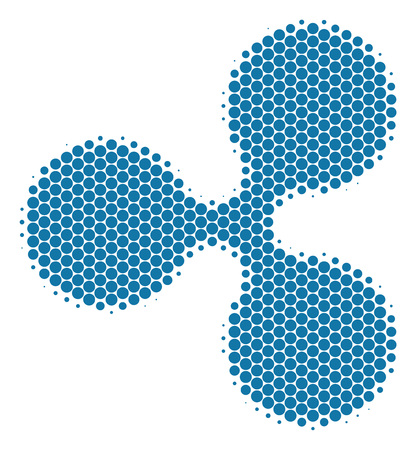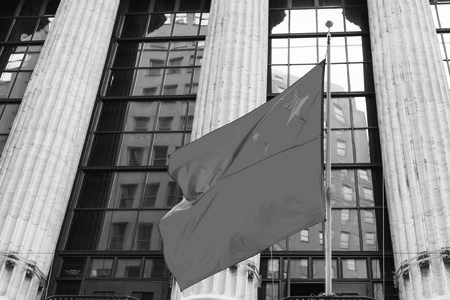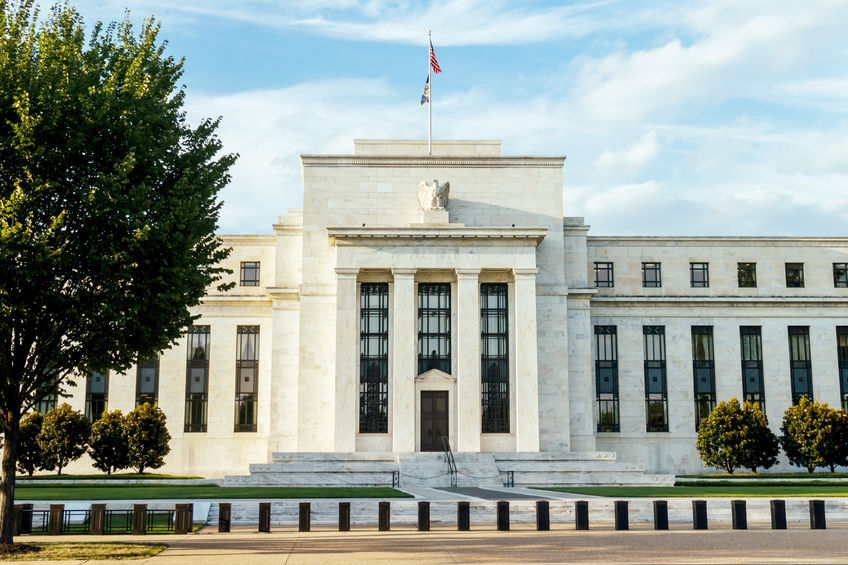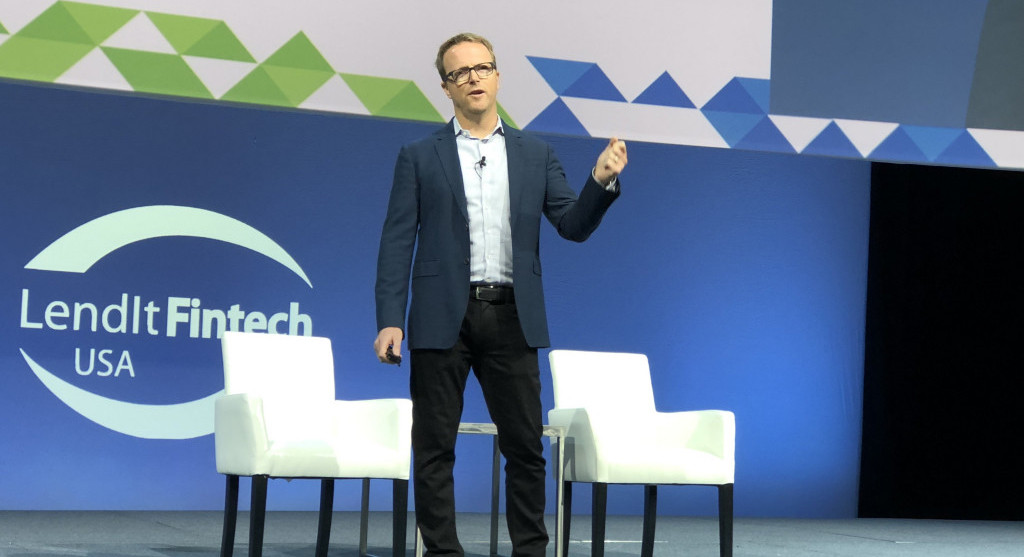As Ripple’s XRP Drops, Legal Trouble Builds
August 15, 2018 Ripple’s cryptocurrency, XRP, has dropped by about 90 percent from a high of $3.84 per token in January of this year to $0.29 today. When XRP hit its high of $3.84, Ripple co-founder Chris Larsen briefly became one of the richest men in the world because of his sizable ownership of the currency, his share then worth about $59.9 billion. But that status was short-lived, along with Ripple’s upward trajectory.
Ripple’s cryptocurrency, XRP, has dropped by about 90 percent from a high of $3.84 per token in January of this year to $0.29 today. When XRP hit its high of $3.84, Ripple co-founder Chris Larsen briefly became one of the richest men in the world because of his sizable ownership of the currency, his share then worth about $59.9 billion. But that status was short-lived, along with Ripple’s upward trajectory.
Of course, the decline of XRP is not unique in the world of cryptocurrency. Bitcoin has also had a dramatic decline in value throughout 2018.
Along with the decline in value of the XRP coin, Ripple has been plagued with lawsuits.
In May, XRP investor Ryan Coffey sued Ripple Labs and its CEO Brad Garlinghouse in a class action suit for allegedly engaging in the sale of unregistered securities. The company and Garlinghouse was said to have made at least $342.8 million through XRP sales that were created out of thin air.
In June, XPR investor Vladi Zakinov filed a class action lawsuit against the same defendants for the same thing. He alleged that the XRP token is a security controlled by Ripple.
And in July, XRP investor David Oconer sued Ripple Labs and Garlinghouse in a class action suit for essentially the same thing. Also in July, Plaintiff Avner Greenwald sued the defendants with similar charges.
The May lawsuit was transferred from state court to federal court by the defendants, Ripple and Garlinghouse. Plaintiff Coffey appealed this, but on August 10th, a California judge denied Coffey’s appeal and said that the case will remain in federal court.
This is advantageous for the defendants because it allows these similar class action lawsuits to be consolidated into one, according James Chareq, an attorney and partner at Hudson Cook who is very familiar with class action cases. Moving from state to federal court increases efficiency and reduces legal fees, he said.
Why is P2P Lending Unraveling in China?
August 14, 2018 Back in 2014, peer to peer (P2P) lending in China was all the rage. Multiple P2P platforms were launching daily, with investors and borrowers were eager to participate. According to South China Morning Post, the P2P lending frenzy hit its peak in 2015 when about 3,500 P2P businesses were operating.
Back in 2014, peer to peer (P2P) lending in China was all the rage. Multiple P2P platforms were launching daily, with investors and borrowers were eager to participate. According to South China Morning Post, the P2P lending frenzy hit its peak in 2015 when about 3,500 P2P businesses were operating.
Now, these same businesses are collapsing at nearly the same speed with which they sprung up. According to South China Morning Post, in conjunction with Reuters, 243 online lending platforms have gone out of business since June. And Chinese investors who can’t get their money out of the companies have taken to the streets. (Although, like with most protests in the country, the government has successfully quashed any sizable demonstration.)
“The trouble is that everything is coming to head this summer and millions of investors are trying to get their money out at the same time,” said Peter Renton, co-founder of the LendIt Fintech, which organizes several international events including an annual conference in China for fintech and online lending.
 “Most people think that even with a big market [like China], it can only sustain a few hundred platforms at most,” he told deBanked.
“Most people think that even with a big market [like China], it can only sustain a few hundred platforms at most,” he told deBanked.
Renton said that this implosion is largely the result of lax Chinese regulation for a number of years. But the Chinese government is now making up for it. In November 2017, China’s central bank said that no new licenses would be issued to online lending platforms. And with Chinese P2P platforms failing daily this summer, the central government has proposed new measures, according to Xinhua, the official government news agency. These proposed measures include setting up “communications windows” to respond to requests by P2P investors, as well as conducting compliance inspections on P2P companies and putting on a blacklist in China’s social credit ratings system any online borrower who tries to avoid P2P loan repayments.
The continuing collapse of P2P lending platforms in China is particularly notable because it affects so many people. According to data used by Reuters, the size of China’s P2P industry is significantly bigger than the rest of the world combined, with outstanding loans of 1.49 trillion yuan, or $217.96 billion.
“We all knew the party was going to end at some point and it looks like 2018 will be the year of reckoning,” Renton wrote in a July 30 story.
Yet in a video aimed at Chinese viewers released at the same time, he said: “I think in a couple years time, when we look back at this year, we’ll see that this was necessary — painful but necessary. The industry is going to come out the other side. The strong platforms are going to survive, the weak ones are not. And I think the industry will be far better off once this all plays out.”
Survey Indicates That Senior Loan Officers Have Eased Standards
August 10, 2018
Domestic banks eased standards or terms on commercial and industrial (C&I) loans over the past three months, according to a July 2018 Federal Reserve survey that gathered information from senior loan officers at banks. The survey received responses from 72 U.S. banks.
In the survey, banks cited increased competition from other lenders as a reason for easing standards. In addition, a significant number of responses mentioned a more favorable economic outlook, increased tolerance for risk, and increased liquidity in the secondary market for these loans as important reasons for the easing.
According to the survey, banks reported stronger demand for C&I loans by small firms and weaker demand for Commercial Real Estate (CRE) loans. When asked to consider a range of leniency from 2005 to the present, bank respondents said that, on average, their lending standards on C&I loans are currently “at the easier end of the range.”
What does “easing standards” actually mean?
According to the report, it means, in part, that “moderate net fractions of banks narrowed loan rate spreads and increased the maximum maturity on loans to small firms.” It also means that a significant number of banks increased the maximum size of credit lines and narrowed loan rate spreads on loans to large and middle-market firms.
Unlike C&I loan standards, banks kept residential lending standards mostly unchanged, according to the survey. As part of this survey, loan officers at 22 U.S. branches or agencies of foreign banks were also interviewed. Interestingly, a significant portion of foreign banks reported that their level of standards on lending to small firms is actually at the tighter end of the range since 2005.
Q2 Acquires Cloud Lending Solutions
August 9, 2018 Q2 Holdings (NYSE:QTWO), which creates digital banking solutions for banks and credit unions, announced yesterday an agreement to acquire San Mateo, California-based Cloud Lending, Inc., a privately-held software as a service (SaaS) company that provides a lending and leasing platform. According to its website, Cloud Lending says that its lender clients can increase loan volume by 40%, decrease time-to-fund by 27% and reduce operating costs by 15%.
Q2 Holdings (NYSE:QTWO), which creates digital banking solutions for banks and credit unions, announced yesterday an agreement to acquire San Mateo, California-based Cloud Lending, Inc., a privately-held software as a service (SaaS) company that provides a lending and leasing platform. According to its website, Cloud Lending says that its lender clients can increase loan volume by 40%, decrease time-to-fund by 27% and reduce operating costs by 15%.
“By acquiring Cloud Lending, we will be able to help our community and regional financial institutions more effectively manage and grow their lending portfolios—their fundamental income-generating activity,” said Q2 CEO, Matt Flake, in a statement.. “There’s a substantial market opportunity for digital lending, and the addition of Cloud Lending’s talented team and next-generation technology solutions will help Q2 expand our footprint in existing markets, as well as enter new ones.”
Both Q2 and Cloud Lending provide services to lenders, whether they are banks or alternatives lenders. With this acquisition, Q2 hopes to add increased efficiency to its offerings. Meanwhile, Cloud Lending can also benefit from the scale, infrastructure and resources of Q2.
“This partnership means more lenders will provide greater access to credit for more people and businesses across the globe,” said Cloud Lending CEO Snehal Fulzele. “Cloud Lending’s team members are excited to partner with Q2 and to continue delivering on our proven track record of innovation in digital lending and leasing.”
Merging with a larger lending company that services banks is one path to take. But nCino, a competitor to Cloud Lending, has recently been partnering with banks instead.
Founded in 2004 and headquartered in Austin, Texas, Q2 went public on the New York Stock Exchange in 2014. The company’s ticker symbol is QTWO. Cloud Lending was founded in 2012 and, in addition to its San Mateo, California headquarters, the company also has offices in the U.K., India and Australia.
Former Lendio Executive Leaves for Enova/The Business Backer
August 8, 2018 Enova announced last week that Jim Granat has joined the company as its Head of Small Business Financing. This will include oversight of Enova’s small business brands: Headway Capital, which provides lines of credit to small business, and The Business Backer, which provides merchant cash advances, among other products.
Enova announced last week that Jim Granat has joined the company as its Head of Small Business Financing. This will include oversight of Enova’s small business brands: Headway Capital, which provides lines of credit to small business, and The Business Backer, which provides merchant cash advances, among other products.
Enova acquired The Business Backer in 2015 for $27 million and retained its president and co-founder, Jim Salters – until recently. An Enova representative confirmed that Salters no longer works at the company. As Head of Small Business Financing, Granat will be assuming at least part of Salters’ role. An Enova representative also said that Granat will be relocating from the Salt Lake City area to Chicago, where Enova has its headquarters.
Granat comes to Enova as the departing president of Lendio, a sizable funder that has been growing and establishing new regional offices throughout the U.S. Prior to his role as Lendio President, just one step below co-founder and CEO Brock Blake, Granat was Chief Operating Officer at Lendio as of 2014.
Enova is a global financial products company. The Business Backer and Headway Capital operate under the Enova umbrella, but as distinct brands. In addition to merchant cash advance, The Business Backer offers term loans from $5,000 to $350,000, SBA loans, factoring, equipment financing, commercial real loans up to $75 million and business lines of credit up to $150,000.
Enova started in 2003 as Check Giant LLC. After several name changes and acquisitions, the company now has more than 1,100 employees and operates internationally. The company went public on the New York Stock Exchange in 2014 and trades as ENVA.
Stripe Becomes a Digital Credit Card Issuer
August 8, 2018 Stripe has recently started offering a new API, or programming feature, that allows its merchants to offer physical or virtual credit cards to their employees. The product, called “Issuing,” is still being tested and is currently by invitation only, although it does appear as an offering on the company’s website. Merchants can request an invitation.
Stripe has recently started offering a new API, or programming feature, that allows its merchants to offer physical or virtual credit cards to their employees. The product, called “Issuing,” is still being tested and is currently by invitation only, although it does appear as an offering on the company’s website. Merchants can request an invitation.
According to the website, creating a card is an easy three step process that involves providing identifying information about the cardholder, then literally creating the card (physical or virtual) and finally, activating it. Physical cards can be shipped either to the merchant or the cardholder, while virtual cards are available to use immediately.
The merchant can manage cards by creating restrictions, like maximum purchase amounts, charges can be disputed, and physical cards can have customizable designs, just like cards issued from a bank. However, Stripe is not a bank. Stripe did not respond in time for this story, but it is likely that the company has partnerships with companies that can underwrite and offer lines of credit to their customers. On the Stripe website, it indicates three of its financing partners: Funding Circle, Iwoca and Clearbanc.
Stripe is a payment platform that facilitates online payments. The company takes 2.9% plus 30 cents of every successful charge a merchant makes. Stripe customers are small business owners, but also include giant companies like Facebook and Target. Founded in 2011 by brothers John and Patrick Collison, Stripe is headquartered in San Francisco. It also has offices in Dublin, London, Paris, Singapore and Tokyo, and it employs more than 1,100 people.
Lending Club Hits Record for Originations
August 7, 2018 In the second quarter of 2018, Lending Club originated a record high of $2.8 billion, up 31% from the same time last year. Net revenue also hit a record high of $177 million, up 27% year-over-year.
In the second quarter of 2018, Lending Club originated a record high of $2.8 billion, up 31% from the same time last year. Net revenue also hit a record high of $177 million, up 27% year-over-year.
During today’s earning call, Lending Club CEO Scott Sanborn said that the company completed a successful securitization this quarter and Lending Club CFO Tom Casey said that that they expect several more by the end of the year. Both acknowledged that the company is still spending millions of dollars to resolve regulatory issues, but Sanborn said he expects that to come to a close by the end of the year. With regard to the record high in originations, Casey said that the company also had a higher percentage of A and B grade loans in the second quarter.
Lending Club offers fixed rate business loans from $5,000 to $300,000 and personal loans of up to $40,000. The company also offers auto refinancing.
Founded in 2007, Lending Club was one of the first major peer-to-peer lenders. The company facilitates loans between individual borrowers and individual or institutional investors. Traditionally, individual investors in companies must be accredited investors. This means that the U.S. Securities and Exchange Commission requires the accredited investor to have a net worth of at least $1 million, excluding the value of one’s primary residence, or they must have income of at least $200,000 each year for the last two years, or $300,000 combined income if married.
Lending Club investors must also satisfy certain lesser financial requirements. In most states, excluding California, Lending Club investors must have an annual gross income of at least $70,000 and a net worth of at least $70,000 (excluding value of home, home furnishings, and automobile) or they must have a net worth of at least $250,000. (California requires the an investor’s annual gross income be $85,000).
Since investors are not accredited, every Lending Club loan, many of them to individuals, must be filed with the SEC so that investing in a Lending Club loan is like buying stock in a publicly traded company. Investors can buy fractions of loans in the form of notes as small as $25.
Lending Club is headquartered in San Francisco and went public on the New York Stock Exchange in 2014.
SoFi Has Massive Loss in Second Quarter
August 7, 2018 SoFi had a second quarter adjusted loss of about $200 million, according to a Bloomberg story from yesterday, citing people familiar with the company’s situation.
SoFi had a second quarter adjusted loss of about $200 million, according to a Bloomberg story from yesterday, citing people familiar with the company’s situation.
“Our Q2 financial results were negatively impacted by significantly lowered valuation of legacy loans and assets as well as the slow start to increasing prices in the face of a rising interest rate environment,” the company said in a second-quarter shareholder letter from August 3, that was obtained by Bloomberg.
At the beginning of July, the Wall Street Journal reported that SoFi had been meeting with banks to discuss raising a roughly $500 million unsecured line of credit that could go toward potential buyouts of other fintech firms.
As of the start of the year, the student loan company, which also offers other financing products, postponed an IPO to 2019. And in October 2017 it withdrew an FDIC application to obtain a special purpose (ILC) bank charter. This came amid a sexual harassment allegations against the company’s co-founder and then CEO Mike Cagney.
In March of this year, Anthony Noto, formerly at Twitter and Goldman Sachs, replaced Cagney as CEO. In Noto’s first shareholder letter as CEO in May, he said that SoFi originated $3.6 billion in loans in the first quarter of 2018, a 27 percent increase from 2017. He also said that the company added about 59,000 members in the quarter, most of them borrowers, bringing the total number close to 500,000.
Additionally, Noto wrote in the May letter, obtained by CNBC, that the company’s “SoFi at Work” program, which partners with companies to help their employees pay off student loans and other debt, expanded its funded loan volume by 118 percent from last year.
SoFi also offers mortgage products, but had to let go of 65 employees from its mortgage operation at the beginning of 2018. Founded in 2011, the company is based in San Francisco and employees more than 1,000 people.






























